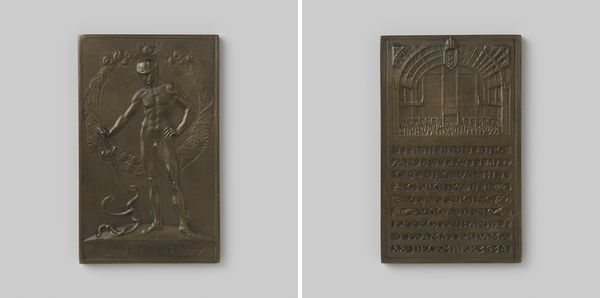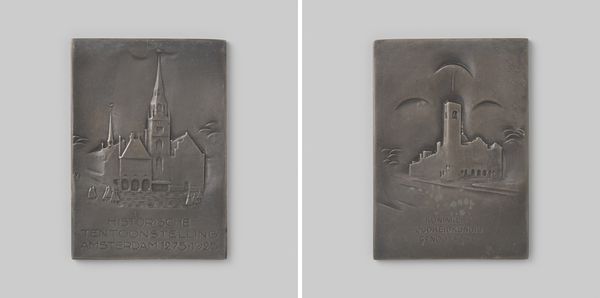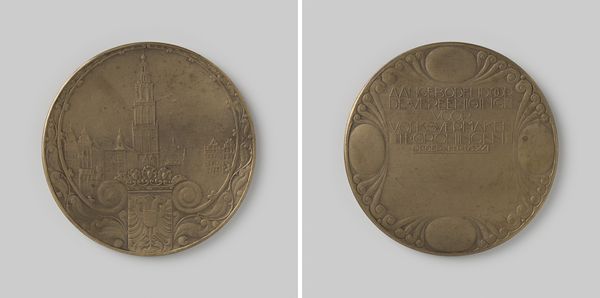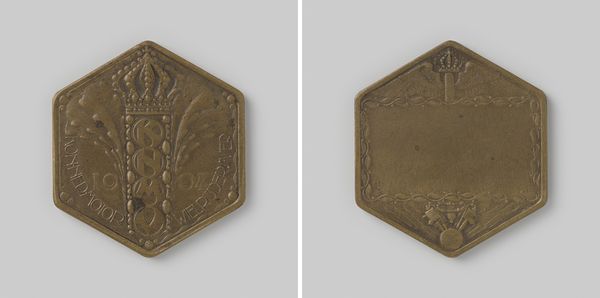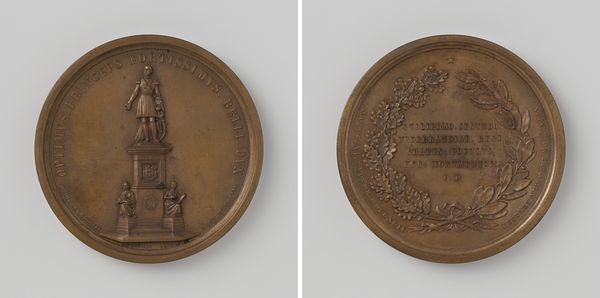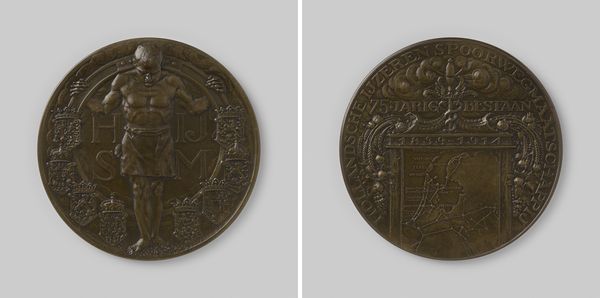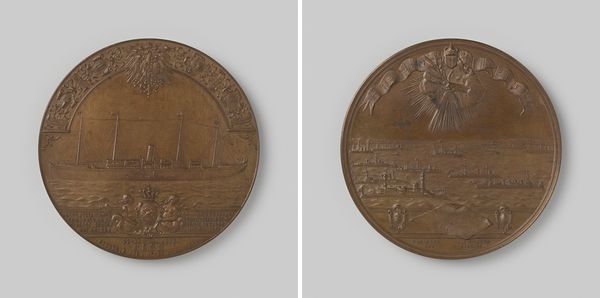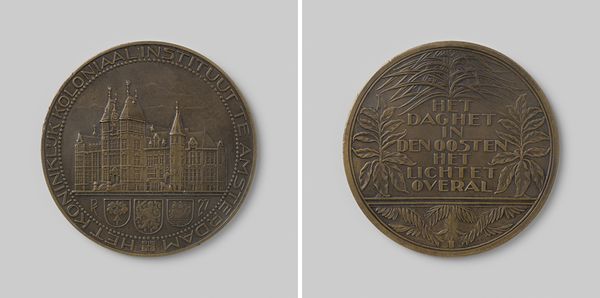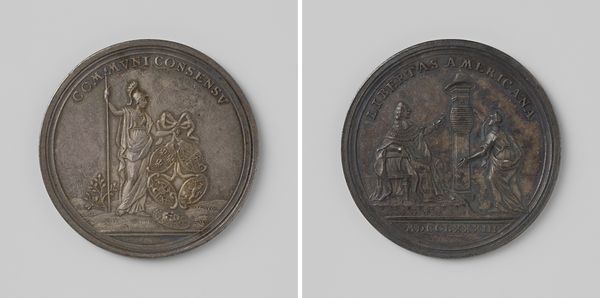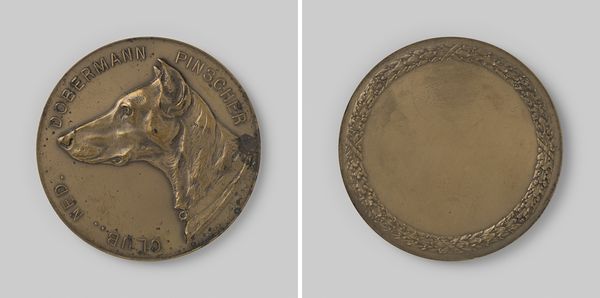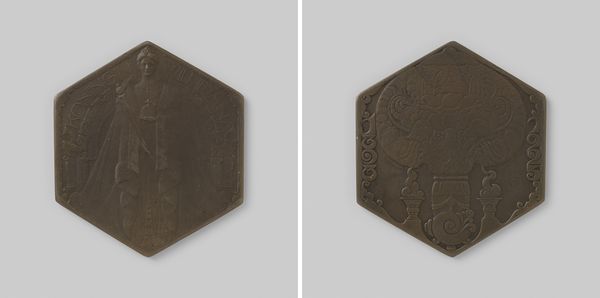
metal, relief, sculpture, architecture
#
portrait
#
metal
#
sculpture
#
textured
#
detailed texture
#
relief
#
sculpture
#
history-painting
#
architecture
Dimensions: height 6.6 cm, width 8.7 cm, thickness 0.45 cm, weight 180.66 gr
Copyright: Rijks Museum: Open Domain
Curator: This striking metal relief, dating from 1913, commemorates the XVIIIe Interparlementaire Vredesconferentie, or the 18th Inter-Parliamentary Peace Conference held in The Hague. Editor: My first impression is one of solemnity. The use of metal, perhaps bronze, with its subdued color palette and the deeply textured surfaces lends an air of gravity, doesn’t it? Curator: Absolutely. Consider the symbols chosen: we see Queen Wilhelmina, in profile, framed by foliage and heraldic emblems of the Netherlands and The Hague. She embodies national identity, evoking continuity and tradition during a period of burgeoning internationalism. Editor: The composition is clearly divided into two distinct fields. The left presents this regal portrait encircled by symbolic elements while the right provides an architectural study. What building is depicted, and what is its connection to the conference? Curator: That’s the Peace Palace in The Hague, completed just before the conference and intended as a global symbol for international law. Its presence invokes the conference's pursuit of justice, visually reinforcing the text: "Si vis pacem, cole justitiam” meaning “If you desire peace, cultivate justice.” Editor: So the building acts as a materialized promise. But I find the level of detail in the architecture quite remarkable; note how the relief emphasizes line, texture, and spatial recession despite the inherent limitations of a relief. Curator: It acts as a cultural anchor and serves as a testament to the importance placed on this event. Note the overall classical structure - both a commemorative portrait and architectural rendering. They give a powerful visual narrative, creating an optimistic vision of peace that, of course, soon collided with the grim realities of the First World War. Editor: That intersection of idealistic aspiration and historical reality casts a profound shadow on the artwork. It offers a study of constructed symbolism against what soon happened. Curator: Precisely, this piece leaves one thinking about cultural memory, the enduring power of symbols, and our continuous striving for a more peaceful future, all embedded within the tangible texture of metal. Editor: Indeed, the inherent tension between the artwork's ambition for lasting peace and its location within historical context underscores the complex relationship between artistic form and historical reality. It invites contemplation on how artistic endeavors shape our collective memory.
Comments
No comments
Be the first to comment and join the conversation on the ultimate creative platform.
